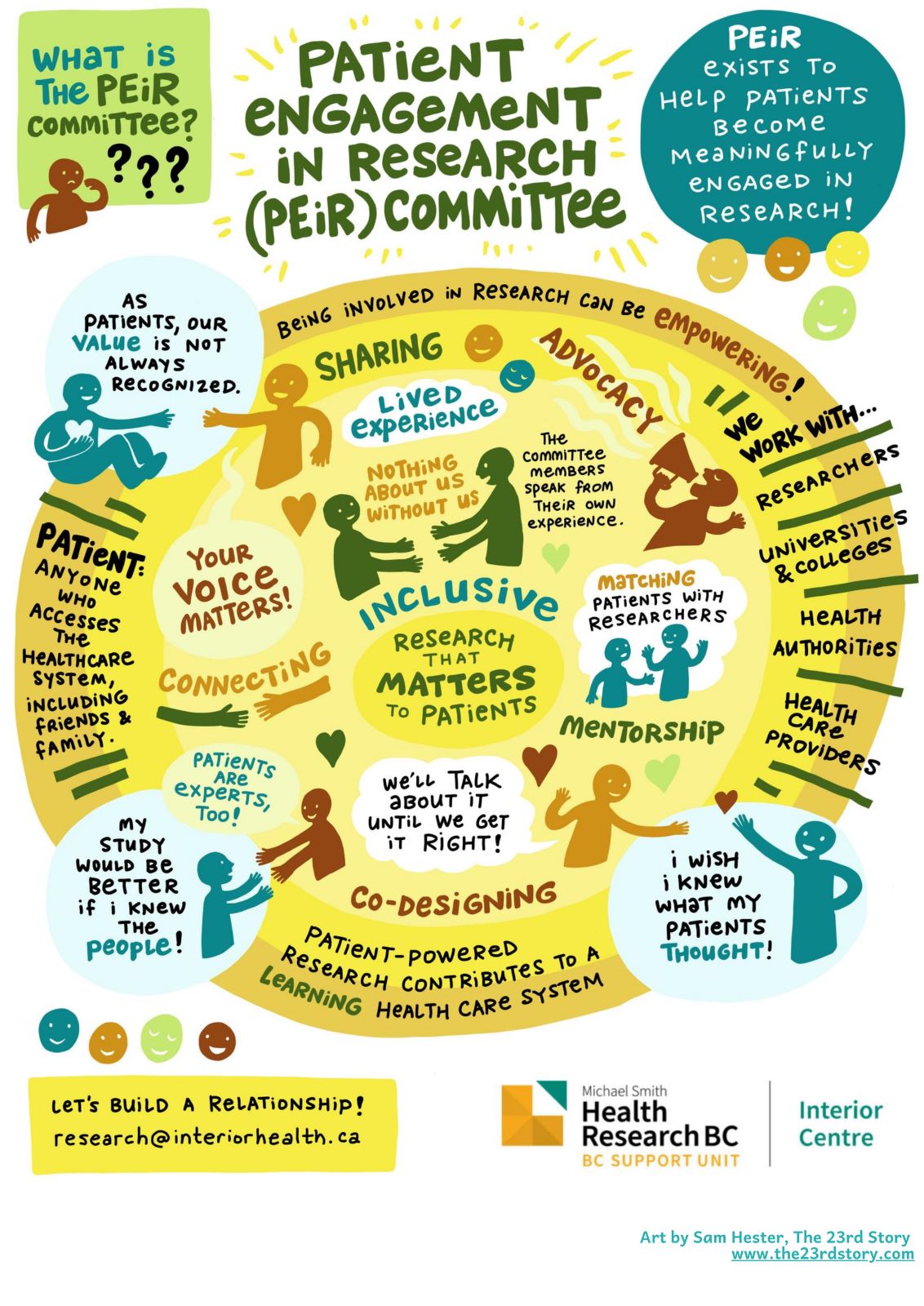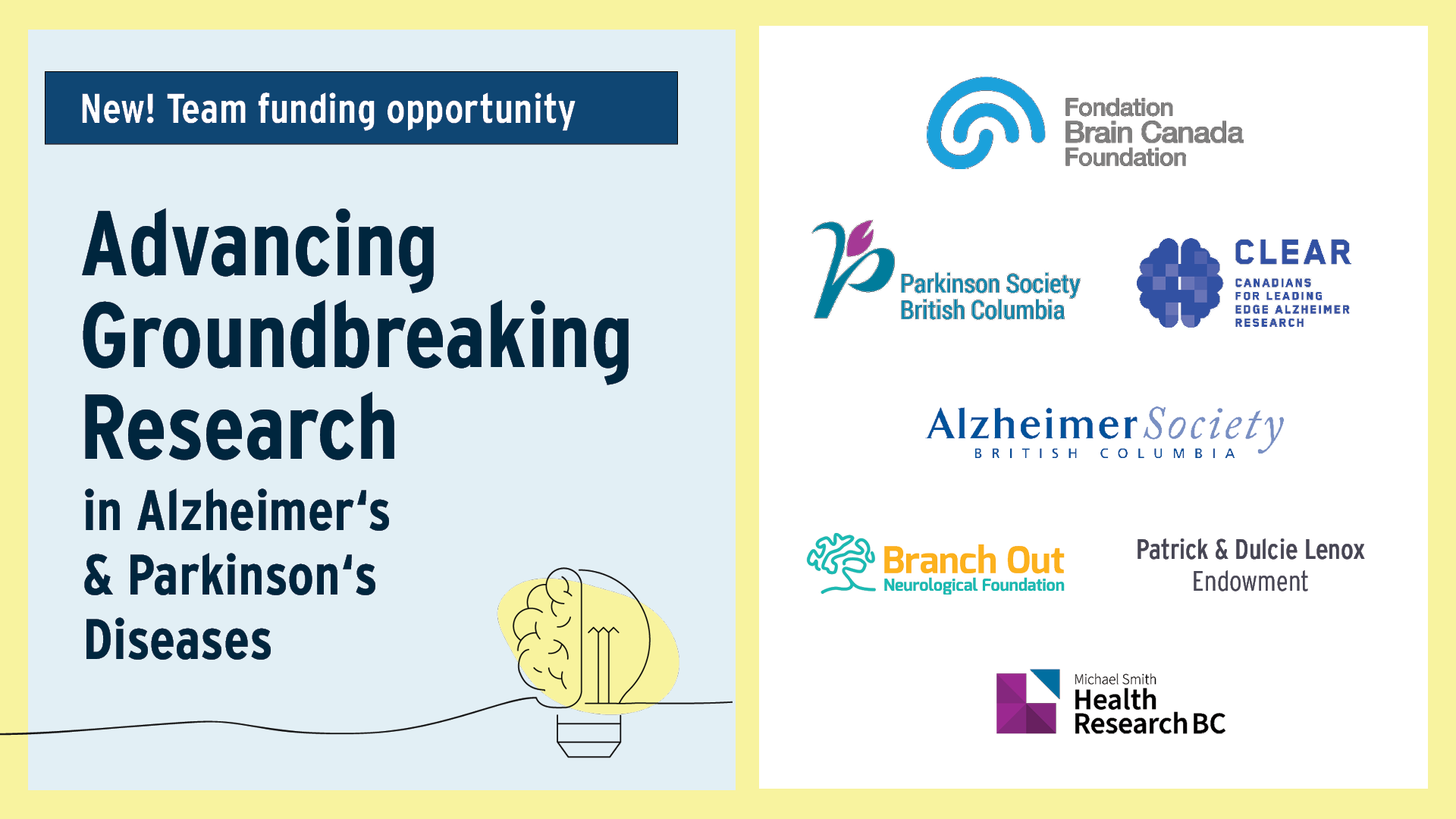‘A unique perspective on health’: Patient committee amplifies rural and remote perspectives in BC’s interior
2 October 2024

The Patient Engagement in Research (PEiR) Committee helps patients become meaningfully engaged in research.
“Living rural and remote gives you a unique perspective on health,” says Paul Burgener, a patient partner and resident of Nelson, in BC’s interior. “Your closest hospital could be hours away. Sometimes you can’t get any Wi-Fi or cell coverage. To reach the next town over, you might have to drive around a mountain or a lake.”
In BC, rural and remote communities face unique challenges when it comes to health. Getting care can be hard due to limited resources, long travel times and dispersed health-care centres that serve smaller, more spread-out populations. Many residents also feel that they are not meaningfully engaged in health-care planning. Often, health-care decisions are made in urban centres and do not reflect rural and remote needs.
“I live in a beautiful, wonderful and resourceful community. There are many challenges as well, but those challenges help inform our views on health care,” says Paul.
A long-time advocate for rural and remote health, Paul is part of the Patient Engagement in Research (PEiR) Committee, which includes patient partners throughout the interior region.
The best care is delivered by health systems that respond to patients’ needs. That’s where the PEiR Committee comes in. Driven by over five patient partners, the PEiR Committee provides a way for people with lived experience to shape research and research planning in BC’s interior — a region that is considered largely rural and remote.1
“PEiR Committee members walk both sides of health care,” says Paul. He is a founding member of the PEiR Committee and a former co-chair. “We’re users of the health system, but we also work with people inside the health system to find better solutions. PEiR creates a space where we can come together as partners to do that work.”
Since 2016, the PEiR Committee has provided guidance, feedback and patient perspectives on work at the Interior Health research department and the BC SUPPORT Unit, Interior Centre. Members have ensured that patient priorities are included in strategic plans and developed a patient engagement framework for the Interior Centre, among many other accomplishments.
In one key project, PEiR Committee members help mentor the next generation of nurses at the College of the Rockies. They work with nursing students who are running research projects in local communities and hospitals, guiding the students from a patient perspective throughout the project. This mentorship has led to positive collaborations between the students and local communities, helping students establish networks and a patient-oriented mindset before they start their practice. Since the program started in 2021, the PEiR Committee has mentored three cohorts of students.
“People with lived experience have incredibly powerful insights, but there isn’t always a way for them to share their voice with the health system. That’s one of the many reasons that the PEiR Committee is so important,” says Kim Peake, research navigation and community facilitation lead, BC SUPPORT Unit Interior Centre and Interior Health research department. “Through the PEiR Committee’s unique structure and meaningful connections, patient partners like Paul can help shape the way that research and care are done. The lessons shared from Paul and PEiR Committee members are indispensable.”
The PEiR Committee consults on patient-oriented research projects, shaping health research across the interior region. PEiR Committee members have also contributed to a report on person- and family-centred care. Commissioned by Interior Health’s board of directors, the report was shared with the health authority’s leaders and quality management committee, highlighting the reach and importance of patient voices in shaping strategic decisions.
In their work, the PEiR Committee connects diverse groups, including health-care providers, researchers and students in the interior region as well as patient- and community-based organizations. Through these connections, the committee aims to uplift rural and remote perspectives.
The BC SUPPORT Unit, part of Michael Smith Health Research BC, is a provincial initiative that moves evidence developed with patients and communities into practice. The BC SUPPORT Unit, Interior Centre connects care providers and decision-makers at Interior Health with the region’s academic, patient and community partners.
Along with the PEiR Committee, Paul is also involved with the Kootenay Boundary Patient Advisory Committee and Community, working on a patient-led article series that educates and empowers rural patients to navigate health care.2
“As patients in rural and remote areas, we bring with us a lived experience that just can’t be experienced in a city,” says Paul. “What works in an urban centre won’t always work in a rural and remote community. We need to be a part of decisions that are made about us.”
REFERENCES
Environmental Reporting BC. Trends in B.C.’s Population Size & Distribution. (March 2018). Retrieved July 12, 2024, from: https://www.env.gov.bc.ca/soe/indicators/sustainability/bc-population.html
Canadian Institute for Health Information. Rural Health Care in Canada. Accessed July 4, 2024, from https://www.cihi.ca/en/topics/rural-health-care-in-canada
Centre for Rural Health Research and BC Rural Health Network. Advancing community engagement in healthcare in rural BC: A gap analysis to improve community involvement in healthcare planning. 2024. Retrieved July 3, 2024, from https://bcruralhealth.org/wp-content/uploads/2024/02/GAP_ANALYSIS_FEB2-1.pdf
Health Authority Profile – 2021. Interior Health. (2021). Retrieved July 8, 2024, from https://www.interiorhealth.ca/sites/default/files/PDFS/interior-health-authority-profile.pdf 1
Kootenay Boundary Patient Advisory Committee and Community (KBPACC). Empowering the citizen patient. Retrieved September 23, 2024, from https://kbpacc.ca/empowering-the-citizen-patient/2
Kornelsen, J. et. al. The rural tax: comprehensive out-of-pocket costs associated with patient travel in British Columbia. (August 21, 2024). Retrieved July 12, 2024, from https://bmchealthservres.biomedcentral.com/articles/10.1186/s12913-021-06833-2
Ministry of Health. Rural health services in BC: a policy framework to provide a system of quality care. 2015. Retrieved July 4, 2024, from https://www.health.gov.bc.ca/library/publications/year/2015/rural-health-policy-paper.pdf
Statistics Canada. Population growth in Canada’s rural areas, 2016 to 2021. (February 9, 2022). Retrieved July 12, 2024 from: https://www12.statcan.gc.ca/census-recensement/2021/as-sa/98-200-x/2021002/98-200-x2021002-eng.cfm





